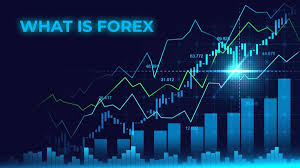
What is Forex Trading?
Forex trading, or foreign exchange trading, is the process of buying and selling currencies in the global marketplace. It is one of the largest financial markets in the world, with a daily trading volume exceeding $6 trillion. Unlike other financial markets, the یوتوتایمز operates 24 hours a day, five days a week, allowing traders to engage in currency exchange at any time.
How Forex Trading Works
In forex trading, currencies are traded in pairs. Each pair consists of a base currency and a quote currency. For example, in the currency pair EUR/USD, the euro (EUR) is the base currency, and the U.S. dollar (USD) is the quote currency. The exchange rate indicates how much of the quote currency is needed to purchase one unit of the base currency.
Traders can speculate on the price movements of currency pairs by either buying (going long) or selling (going short) them. If a trader believes that the euro will strengthen against the dollar, they would buy the EUR/USD pair. Conversely, if they anticipate the euro will weaken, they would sell the pair.
Key Concepts in Forex Trading
- Pips: A pip is the smallest price movement in a currency pair. For most pairs, it is typically the fourth decimal place (0.0001), but for pairs involving the Japanese yen, it is the second decimal place (0.01).
- Leverage: Leverage allows traders to control a larger position with a smaller amount of capital. For instance, with a leverage ratio of 100:1, a trader can control a position worth $100,000 with just $1,000. While leverage can amplify profits, it also increases the risk of losses.
- Margin: Margin is the amount of money required to open a leveraged position. It is expressed as a percentage of the total trade size. If a trader has a margin requirement of 1%, they would need $1,000 to control a $100,000 position.
- Lot Sizes: Forex trades are executed in specific quantities known as lots. A standard lot is 100,000 units of the base currency, a mini lot is 10,000 units, and a micro lot is 1,000 units. Understanding lot sizes is essential for risk management.
Trading Strategies
Forex trading strategies can vary widely, but they generally fall into three categories:
- Scalping: This strategy involves making small profits from numerous trades over short timeframes. Scalpers typically hold positions for seconds or minutes.
- Day Trading: Day traders open and close positions within the same trading day, aiming to capitalize on short-term price movements without holding overnight positions.
- Swing Trading: Swing traders look to capture larger price movements over days or weeks. They rely on technical analysis and market trends to make their trading decisions.
Tools and Analysis
Successful forex trading often relies on two main types of analysis:
- Fundamental Analysis: This approach involves analyzing economic indicators, interest rates, and geopolitical events that can impact currency values. Traders assess news releases and economic reports to forecast market movements.
- Technical Analysis: Technical analysts use charts and indicators to identify price patterns and trends. Common tools include moving averages, Relative Strength Index (RSI), and Fibonacci retracement levels.
Risks and Considerations
While forex trading can be lucrative, it comes with significant risks. The high volatility of currency markets can lead to substantial losses. Here are a few considerations for traders:
- Risk Management: Always use risk management techniques, such as setting stop-loss orders to limit potential losses.
- Education: Invest time in learning about forex trading strategies and market dynamics before starting.
- Choose a Reputable Broker: Select a regulated broker that offers a user-friendly trading platform and robust customer support.
Conclusion
Forex trading offers an exciting opportunity to participate in the global financial markets. By understanding the fundamentals, employing effective strategies, and managing risks, traders can navigate the complexities of forex trading and potentially achieve their financial goals. Whether you’re a novice or an experienced trader, continuous education and practice are essential for success in this dynamic market.